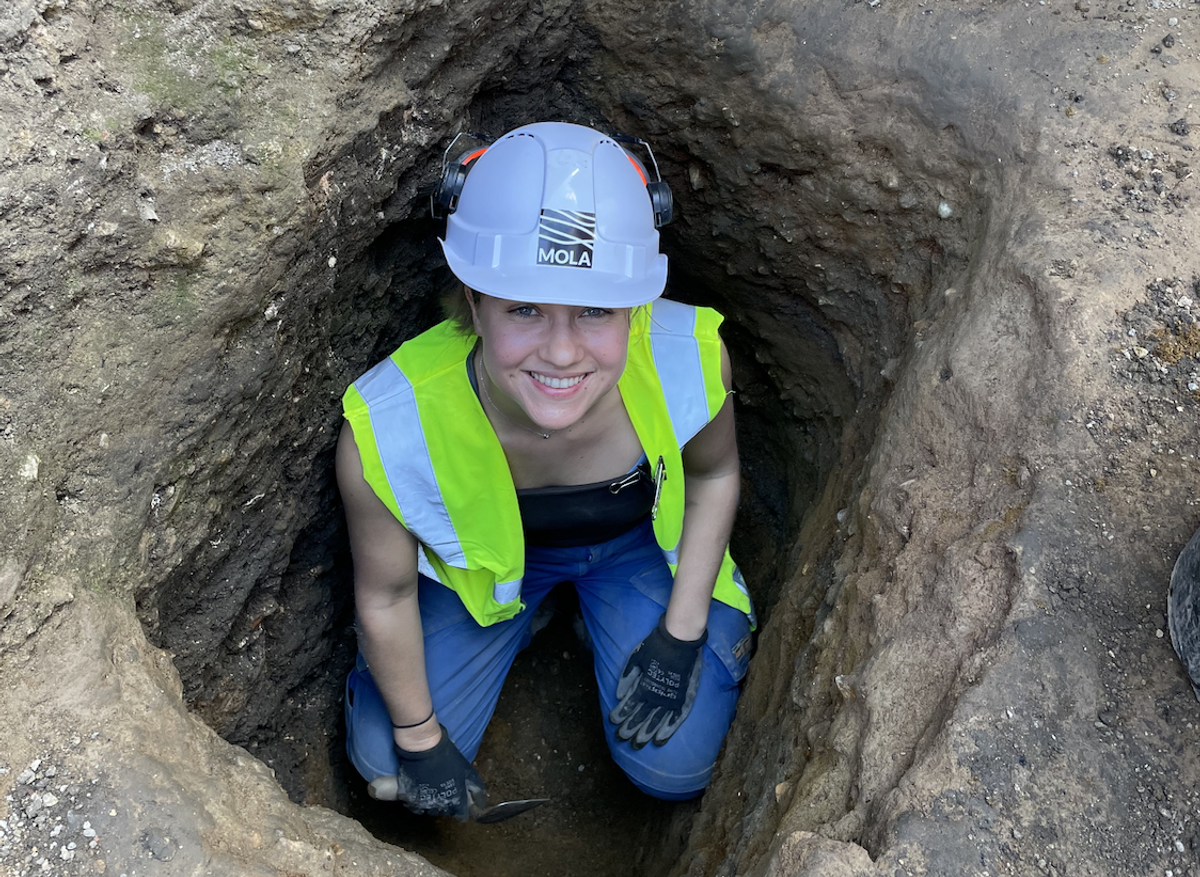What’s my job?
I work as a field archaeologist in London. My role, along with the rest of the field team, is to excavate and record features and finds during the pre-construction phase of a project. In London, this involves working to save any archaeology before a new skyscraper pops up, a pipeline is laid or HS2 is finally completed.
How did I get into archaeology?
I am a relative newbie in the archaeology sector. This is my first job in the field, although I did study archaeology (and anthropology) at university. After graduating, I spent a year working for a small chocolate company, writing articles and researching chocolate related topics. After eating my body weight in chocolate weekly for a year, I moved to Reunion, a department of France in the Indian Ocean. Here, I taught English and spent my free time camping, hiking and diving.
I have always loved travelling and being outdoors, that’s partly why I chose to study archaeology - with a preconceived notion of living the life of Indiana Jones. So when I got back to the UK I decided to apply for a job in archaeology and landed my current role. Although it wasn’t the most direct route into archaeology, I’m glad I ended up here and I plan to stay.
An average day:
Days start early, around 8am, but luckily that means finishing early too and dodging rush hour on the tube. Once on site, I get on my PPE (hard hat, hi-vis, steel capped boots… the works) and gather for the morning briefing before heading down to site.
Sites vary a lot. The city has seen multiple periods of occupation, as a result London has very deep stratigraphy. Recently, on one site we went from digging a post-medieval burial ground to Roman masonry.
There are a mixture of tasks to do on site from breaking a sweat shovelling spoil to drawing plans of features, taking levels and filling out context sheets.
As archaeologists we’re at the beginning of a chain - we are responsible for uncovering any material culture that has been lying under the capital for hundreds, sometimes thousands of years.
After the field team has finished excavations, finds and samples are sent to our processing team. Here they can look at finds in more detail and get a better sense of the site, giving a more accurate time period and details of the use of the site.
Considering a career in commercial archaeology?
The people and comradery on site is a massive bonus of this job, although conditions can sometimes be tough and the physical work tiring, there’s definitely a team spirit that pulls you through.
But ultimately, the best part about being an archaeologist in London is the incredible discoveries. Being one of the first to touch a roman wall for thousands of years or being face to face with a victorian skeleton isn’t a bad way to earn a living.


